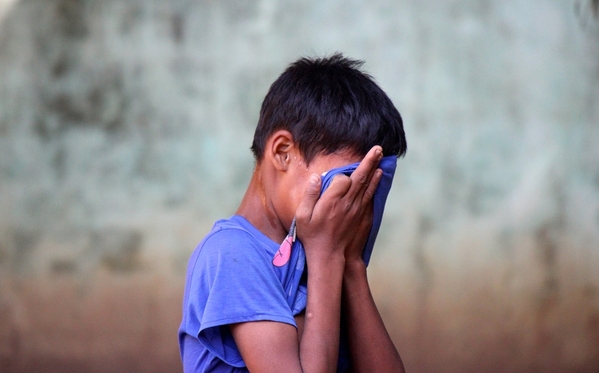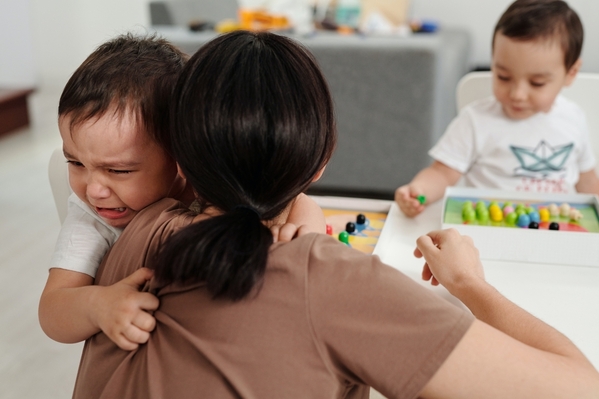On social media the other day, there was a post from a new parent friend of mine about why people insist on telling children not to cry, or to stop crying, or even to calm down. There were a lot of comments, and I think most folks got that telling kids (or anyone, really) "don't cry" is not particularly helpful.
If you aren't sure, I invite you to do a little thought exercise with me. Imagine you are right in the middle of your favorite rant. You are telling this person just how important this issue is, when all of a sudden, they say, "Calm down." Even if they say it calmly, chances are good that you will feel anything but calm.(Image shows a wall with Calm Down written in script with an arrow pointing down underneath. The words are back lit. Photo is from Samuel Regan Asante at unsplash.)
Besides possibly intensifying their emotions, telling children to stop crying isn't particularly effective, at least not at first. If you do it often enough, and with enough intensity, children will learn, in fact, to hold in their tears. Or to hide them. But is this what we really want for children? Are we hoping to shut down their emotions?
(Image shows a young brown-skinned person in a blue shirt with their shirt pulled up to hide their face. Their hair is black. Photo is from Lucas Metz at unsplash.)
I've also witnessed grown-ups saying things like, "I see that you are mad/sad/upset" when they see children crying. I think it's in part about identifying feelings for children- and it often seems to backfire. And I worry sometimes that we are rushing children into their heads too quickly.
Emotions are not some kind of cosmic error. They exist for our benefit. Emotions tell us (sometimes before our brains get there) to move away or towards people, situations, and ideas. When we are having an emotion, the most important thing is the emotion itself. They are a kind of compass for our lives. But only when we allow them to be so. Curious about how that works?
(Image shows the same people from the banner photo, this time the female caregiver is holding the crying child. The other child continues to play/work with their toys. Photo is from Jep Gambardella at pexels.)
First, when children are crying, we as adults can allow them to feel that emotion (vs asking them to stop crying or trying to soothe them or cheering them up). We can sit quietly, maybe make observations, "I see you crying" or "This seems hard." If we saw what we think caused the distress, we could ask, "Is this about falling down?" But mostly it works best if we can just be with children, witness their tears, and offer our support, "I'll stay with you."
When they start to feel better, we can offer space to talk - but not require it. Allowing them a safe place to talk about what happened makes it possible for them to start to understand where their feelings come from and how to share those feelings with others. Over time, children learn that feelings are okay to have - and even better - that their feelings give them important information about themselves and the world.
What are your emotions telling you these days?
Banner photo: Image shows three light brown people with dark hair, two toddlers and a grown up who appears female (you can only see the side of their face). The two children each have a peg board game in front of them. The child on the left is crying, while the other is looking down at the board. The photo is from Jep Gambardella at pexels.
Posted also on my blog:








Comments (1)